How Do Cats Show Affection? 7 Cat Affection Signs
The post How Do Cats Show Affection? 7 Cat Affection Signs by Marilyn Krieger appeared first on Catster. Copying over entire articles infringes on copyright laws. You may not be aware of it, but all of these articles were assigned, contracted and paid for, so they aren't considered public domain. However, we appreciate that you like the article and would love it if you continued sharing just the first paragraph of an article, then linking out to the rest of the piece on Catster.com.
How do cats show affection? Cat kisses, grooming, tail fluffs, chirps and mews — these are a few of the sweet ways cats that cats show affection to the people they feel close to. Because some signs of cat affection are subtle, they are often misinterpreted and sometimes overlooked. So, how do cats show affection? Typically, kitties do not demonstrate their warm feelings toward people in loud, boisterous ways. They don’t wag their tails or shower their loved ones with sloppy kisses like some dogs do. Instead, cats whisper their affections. Here are some signs of cat affection that every cat parent should know.
1. Cats show affection through their eyes
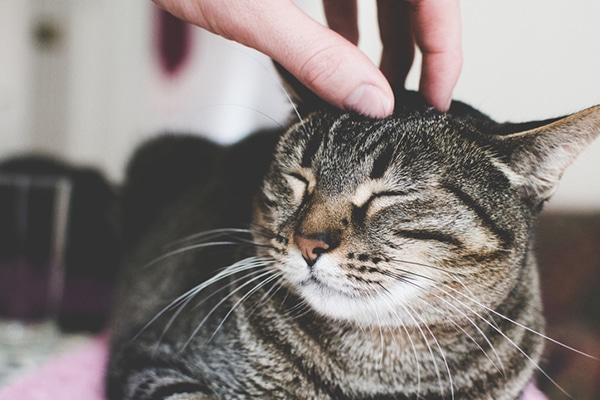
Slow blinking is a common sign of cat affection. Photography ©KandM-photography | Thinkstock.
How do cats show affection with their eyes? It is a pretty good indicator that your cat trusts and enjoys your company when she looks at you with half-closed eyes while slowly blinking. These special eye blinks are called cat kisses and are reciprocal. You can tell your cat you love her too by giving her cat kisses. This sign of cat affection conveys relaxation, contentment, affection and trust; they help build and strengthen your relationship with her. She may respond with more slow blinks.
2. Cats show affection through their tails
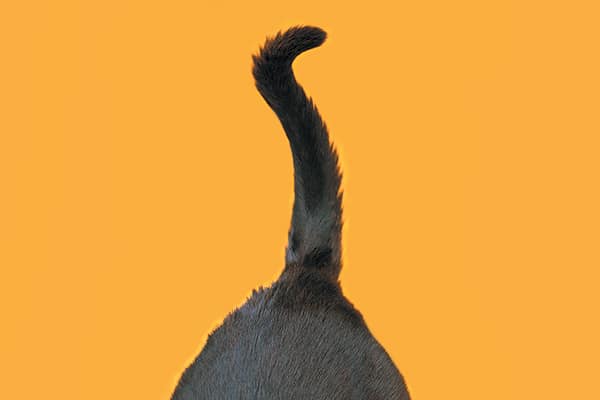
Tails are a good way to tell what your cat is feeling. Photography ©Photodisc | Thinkstock.
How do cats show affection through their tails? Tails are emotional barometers, accurately conveying emotions through how they are held and positioned, and the degrees of fur puffiness. When combined with body language and other indicators, they communicate a gamut of emotions from fear and aggression to affection and happiness. Whereas most people readily recognize signs of fear and aggression, they are not as aware that tails are indicators of cat affection, too.
Cats often show their emotional attachments through tail placements. Connection is demonstrated by twining tails around the legs and arms of their favored buddies. Sometimes kitties express warm feelings as they relax next to their people while physically touching or resting their tails on them. Although I try not to anthropomorphize, the sweet behavior reminds me of holding hands with a best friend.
In addition to tail wrapping and touching, kitties express happiness and warm feelings by fluffing out the base of their tails while subtly quivering them. Simultaneously they hold their tails upright with a slight curve at the top. This behavior is sometimes called the happy tail dance. Usually it is accompanied by an endearing kitty love blink.
3. Cats show affection through cheek rubs
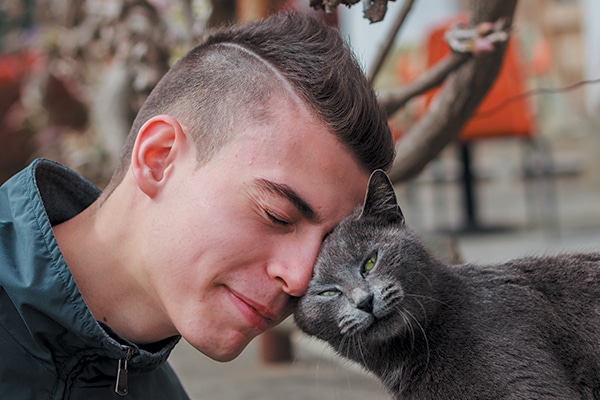
Check rubs are another sign of cat affection. Photography ©Matteo Viviani | Thinkstock.
How do cats show affection when they rub their cheeks on you? One friendly way cats greet those they trust and feel safe with is by rubbing their cheeks on them. Cheek rubs are a sign of cat affection that are also invitations for socializing. Kitties have scent glands on their cheeks that produce pheromones. In addition to showing their favorite people trust and affection, felines mark ownership through the behavior and mingle their scents with those they are attached to.
With cats you don’t know, you can encourage socialization by extending your index finger toward the cat at about her nose level. It doesn’t matter whether she is a few feet away or across the street. If she wants to say hello, she’ll approach your finger and touch it with her nose and then turn her head until your finger is on her cheek. If she trusts you, she will rub your hand with her cheek, indicating that she is open to socializing. This may be the beginning of a beautiful friendship!
4. Cats show affection through head bunting
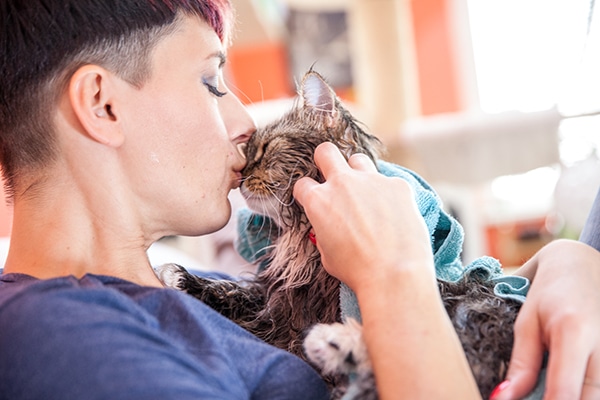
Cats show affection through head bunting. Photography ©CasarsaGuru | E+ / Getty Images.
How do cats show their affection through head butts, or head bunting? This is a sign of cat affection that also marks you and mingles her scent with yours. This is a social cat affection behavior that does double duty. In addition to showing trust and friendship, head bunting proclaims ownership. Scent that is produced from glands located on your kitty’s head is transferred on you when she butts you with her head.
5. Cats show affection through language
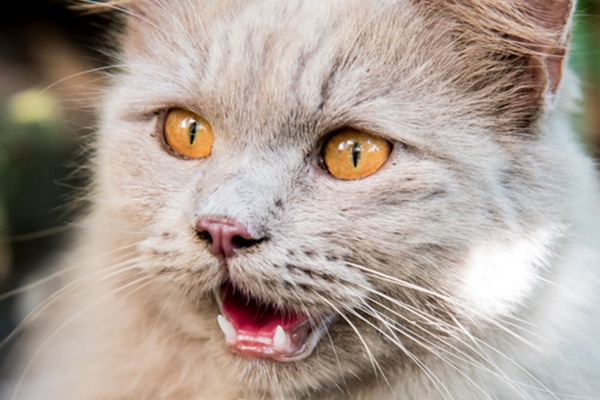
Certain vocalizations . Photography ©graphixchon | Thinkstock.
How do cats show affection with cat sounds? Chirrs, chirps, purrs, trills and mews often communicate endearments and trust. Although mom cats communicate reassurance to their kittens through chirrs and chortles, these sweet sounds of cat affection are often reserved for special people whom cats feel close to. Endearing emotions are also expressed through other vocalizations such as special meows and mews — some are soft and kitten-like, while others are louder.
Purring can also indicate that your kitty is feeling secure, safe and reassured around you. Her purrs may show affection, especially when she accompanies them with kitty kisses and other expressive cat affection signals such as touching you with a paw or tail.
6. Cats show affection through grooming
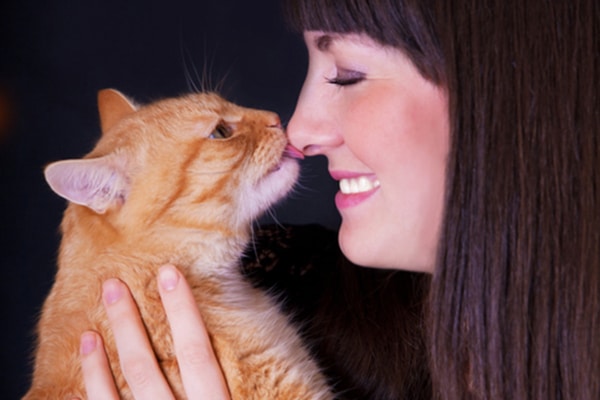
A cat who grooms you may be showing his affection for you. Photography ©Murika | Thinkstock.
How do cats show affection through grooming? Cats who feel connected and close to each other will mutually groom (allogrooming). The behavior helps them relax, shows trust and builds a community scent — important for recognizing family members and buddies. People are not exempt from this sign of cat affection — grooming isn’t reserved just for those of the same species. Cats will sometimes lick their human friends, displaying affection while mingling their scents.
7. Cats show affection by hanging out on and around you
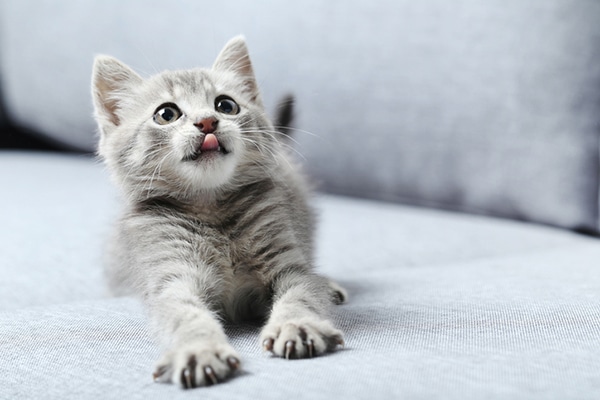
Even if your cat isn’t a lap cat, hanging out around you still indicates that she loves you. Photography by 5second/Thinkstock.
How do cats show affection when they follow you? Felines like being around those they feel an affinity for. Your special kitty might be relaxing near you or napping on your lap. She might position herself so that she touches you — her back may be against your leg or she reaches out and pats you with a paw. Even if your cat isn’t a lap cat, she may still demonstrate she feels connected to you by hanging out nearby.
Some kitties follow their people around the house. Food isn’t part of the equation — they trail their humans because they like being with them. Some tag along, following those they feel connected to from room to room.
The bottom line on cat affection and cat communication
Cats are very good communicators, using a combination of body language, postures and vocalizations to express their feelings. Although cat affection is subtle and at times complex, they have a variety of ways of showing affection and trust to the people they are attached to.
Tell us: How do cats show affection, in your experience?
Thumbnail: Photography ©igor_kell | Thinkstock.
This post was originally published in 2010.
Still stumped on cats showing affection? Meeowcat.com reviews the 10 most affectionate cat breeds >>
About the author
Please follow Marilyn on Facebook!
If you suspect a behavioral problem, always rule out any possible medical issues that may be causing the behavior by first having your cat examined by a veterinarian. Marilyn can also help you resolve cat behavior challenges through a consultation.
Marilyn, a certified cat behavior consultant, owner of The Cat Coach, LLC, solves cat behavior problems nationally and internationally through on site, Skype and phone consultations. She uses force free methods that include environmental changes, management, clicker training and other behavior modification techniques.
She is also an author. Her award-winning book Naughty No More! focuses on solving cat behavior problems through clicker training and other force-free methods. Marilyn is big on education — she feels it is important for cat parents to know the reasons behind their cat’s behaviors. She is a frequent guest on television and radio, answering cat behavior questions and helping people understand their cats.
Read more about cat behavior on Catster.com:
- Do Cats Cry? What to Know and What to Do About a Crying Cat
- How to Speak Cat
- Let’s Talk Angry Cat Sounds and How to Handle Them
The post How Do Cats Show Affection? 7 Cat Affection Signs by Marilyn Krieger appeared first on Catster. Copying over entire articles infringes on copyright laws. You may not be aware of it, but all of these articles were assigned, contracted and paid for, so they aren't considered public domain. However, we appreciate that you like the article and would love it if you continued sharing just the first paragraph of an article, then linking out to the rest of the piece on Catster.com.




Post a Comment